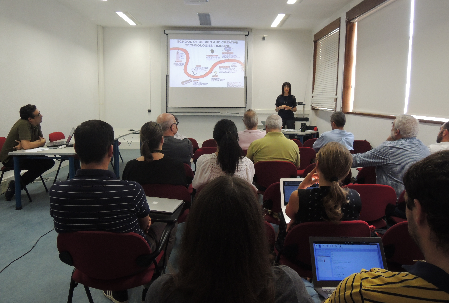Design thinking, the key for solving problem
Interdisciplinary research,
education and capacity building
23 Oct 2017
On October 16th, Professor Doreen Lorenzo spoke about what Design Thinking is and what it is not
To listen to her experience, students and faculty were present at the Seminar on October 16th, at FCT/UNL. As Director of the Center for Integrated Design (CID), Lorenzo leads an advisory group tasked with integrating design studies curricula in a multidisciplinary background schools. The idea of the new curricular options was to offer students opportunities to study design from a variety of disciplinary perspectives.
According to Lorenzo, “the Higher Education can play a valuable role in teaching people how to use Design Thinking effectively. We need to make sure that we have an interdisciplinary approach to Design Thinking to make sure it is effective”. It is necessary to get insights from people to be able to understand them and see the problems you will deal with. “The thing is more cognitive than everything else. It is a question in how to convince people.”
 To Lorenzo, the path is fostering the higher education by having a Design Thinking Minor across all schools. The idea is to solve thought problems with this methodology. Lorenzo intents to share vocabulary and understanding and to gather students to work and think together.
To Lorenzo, the path is fostering the higher education by having a Design Thinking Minor across all schools. The idea is to solve thought problems with this methodology. Lorenzo intents to share vocabulary and understanding and to gather students to work and think together.
The involvement and partnerships have been expanding since 2014 when the Center for Arts and Entertainment Technologies (CAET) was created. In the following years, the Design Institute for Health and the CID were formed which has integrated Design, Engineering, Information, Business, Computer Science and Architecture programs.
In a context of creative economy, Lorenzo believes the superhero concept falls apart. “To maintain a company, you need an integrated and multidisciplinary team. We need collaboration.” In a word, Lorenzo summarized her thinking: Empathy. “It should be the foundation for learning.”

 News
News
